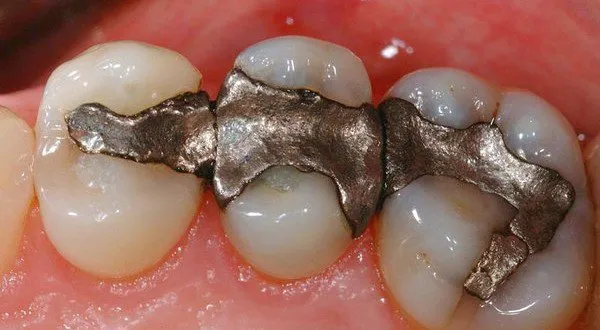Dental Amalgam
It's no secret that the dental amalgam of metals used for tooth fillings is 50% mercury, and it is no secret that mercury is one of the most toxic substances known to man.
It's interesting to note that back in the 1840's when mercury based fillings were introduced to America as a cheap alternative to gold fillings, the American Society of Dental Surgeons (ASDS) banned all dental practitioners who used the amalgam, citing its use as unethical.
This decision to ban dental amalgam led to the complete demise of the ASDS and the formation of the American Dental Convention, followed by various other dental organisations who all supported the use of mercury fillings.

The EU Ban Dental Amalgam
After over a hundred and fifty years of dentists filling our mouth with a chemical known to be a neurotoxin since at least 1898 when legislation was passed in France to protect hat makers from the dangers of erethism (mercury poisoning), and only now are measures being taken to ban mercury tooth fillings.
As of 1st July 2018 the use of amalgam fillings on children under 15 and pregnant or breastfeeding women will be banned in 28 countries of the EU with the aim of phasing it out completely by 2030, so that's good news. Unfortunately this time round France has opted out of legislation to ban mercury for use in fillings, and the UK has not agreed to implement the new measures either.

Why Has Amalgam Been In Use For So Long?
The dental associations of the world apparently deemed amalgam as safe for use because nobody displayed any side effects due to its use and it was assumed that the mercury became inert after being mixed and solidified with other metals, that it no longer expelled poisonous fumes.
We have now known for some time that the mercury in fillings does indeed give off fumes and continues to do so for decades after being installed in the tooth as it slowly and continually evaporates.
The level of mercury fumes are highest after chewing, in one woman who was tested for mecury levels it showed that "if her mouth was a building, it would have been condemned" because the level of mercury fumes were three times higher than the highest level approved as 'safe' for the workplace.
Dentists are not Doctors and thus are not qualified to diagnose the effects of mercury poisoning, in particular when low level mercury poisoning can manifest in subtle emotional changes such as shyness or irritability.

Let Us Get Rid Of Amalgam
I still have a few amalgam fillings from when I was young and loved sugar (the effects of sugar on the brain and body is a whole other issue that needs to be addressed), though the last time I needed a filling replaced I opted for a composite resin and will at some point in the not too distant future replace the remaining amalgam with composite.
Hopefully the US the UK, France and the rest of the world, will follow the EU and put an end to the absurd practice of installing slow release poison devices in our mouths.